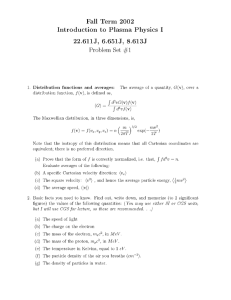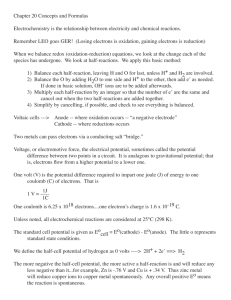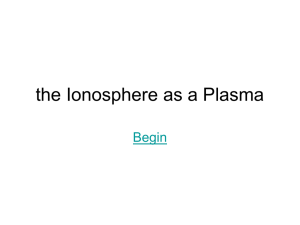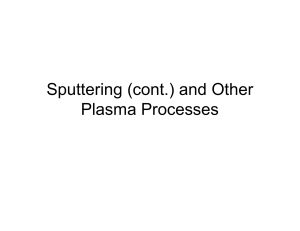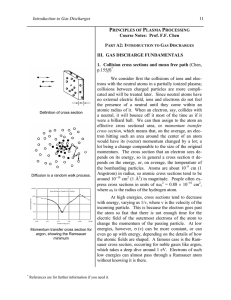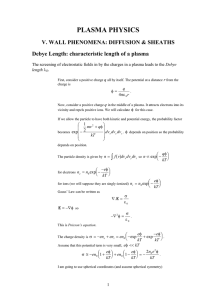Introduction to Plasma Physics I 22.611j, 8.613l, 6.651j I.H. Hutchinson 16 Sep 2003
advertisement
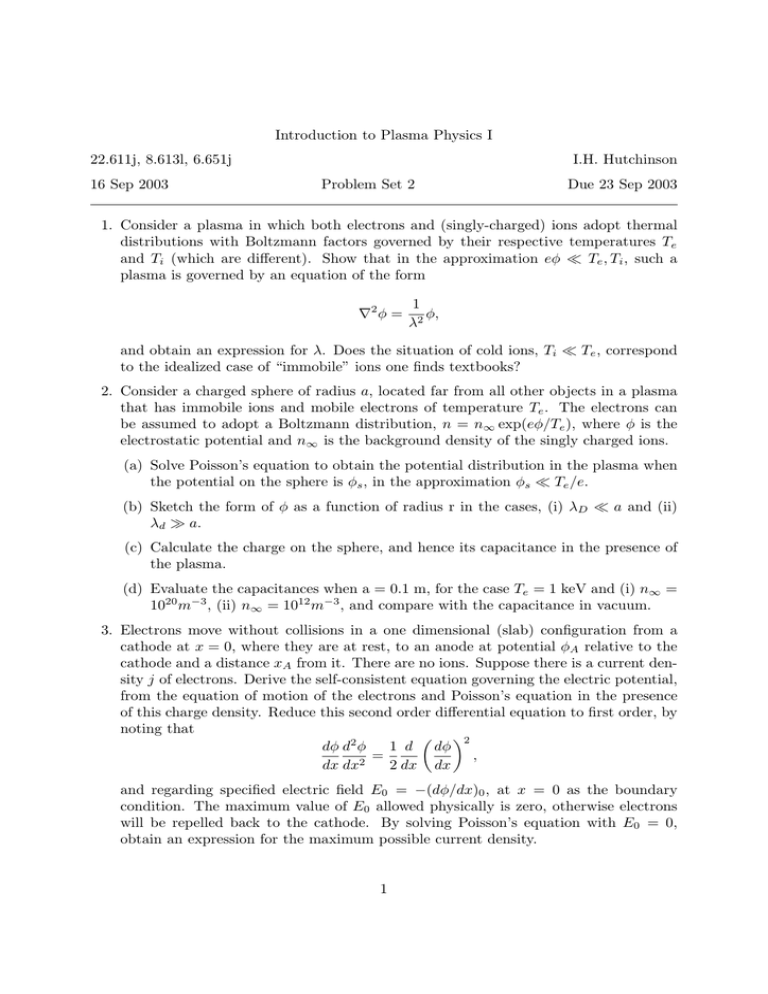
Introduction to Plasma Physics I 22.611j, 8.613l, 6.651j 16 Sep 2003 I.H. Hutchinson Problem Set 2 Due 23 Sep 2003 1. Consider a plasma in which both electrons and (singly-charged) ions adopt thermal distributions with Boltzmann factors governed by their respective temperatures Te and Ti (which are different). Show that in the approximation eφ Te , Ti , such a plasma is governed by an equation of the form ∇2 φ = 1 φ, λ2 and obtain an expression for λ. Does the situation of cold ions, Ti Te , correspond to the idealized case of “immobile” ions one finds textbooks? 2. Consider a charged sphere of radius a, located far from all other objects in a plasma that has immobile ions and mobile electrons of temperature Te . The electrons can be assumed to adopt a Boltzmann distribution, n = n∞ exp(eφ/Te ), where φ is the electrostatic potential and n∞ is the background density of the singly charged ions. (a) Solve Poisson’s equation to obtain the potential distribution in the plasma when the potential on the sphere is φs , in the approximation φs Te /e. (b) Sketch the form of φ as a function of radius r in the cases, (i) λD a and (ii) λd a. (c) Calculate the charge on the sphere, and hence its capacitance in the presence of the plasma. (d) Evaluate the capacitances when a = 0.1 m, for the case Te = 1 keV and (i) n∞ = 1020 m−3 , (ii) n∞ = 1012 m−3 , and compare with the capacitance in vacuum. 3. Electrons move without collisions in a one dimensional (slab) configuration from a cathode at x = 0, where they are at rest, to an anode at potential φA relative to the cathode and a distance xA from it. There are no ions. Suppose there is a current density j of electrons. Derive the self-consistent equation governing the electric potential, from the equation of motion of the electrons and Poisson’s equation in the presence of this charge density. Reduce this second order differential equation to first order, by noting that 2 dφ d2 φ 1 d dφ = , dx dx2 2 dx dx and regarding specified electric field E0 = −(dφ/dx)0 , at x = 0 as the boundary condition. The maximum value of E0 allowed physically is zero, otherwise electrons will be repelled back to the cathode. By solving Poisson’s equation with E0 = 0, obtain an expression for the maximum possible current density. 1
